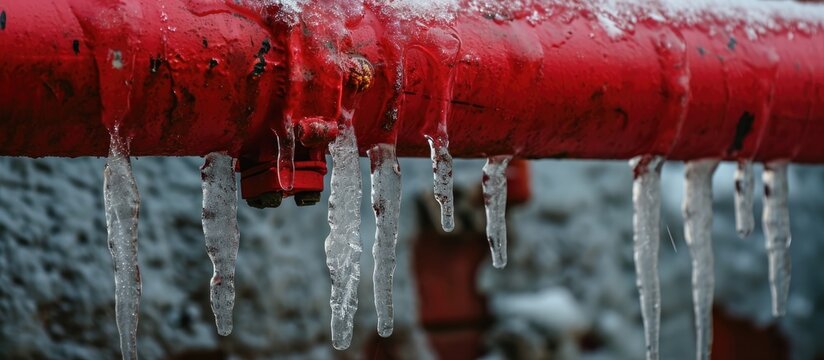Important Tips to Prevent Frozen Pipes in Winter
Important Tips to Prevent Frozen Pipes in Winter
Blog Article
They are making a number of good pointers relating to Preventing and dealing with frozen pipes overall in the content in the next paragraphs.

Winter can ruin your pipes, specifically by freezing pipelines. Below's just how to avoid it from occurring and what to do if it does.
Introduction
As temperatures drop, the risk of icy pipelines increases, potentially leading to pricey repair services and water damage. Understanding just how to avoid icy pipes is essential for homeowners in cool climates.
Recognizing Frozen Pipelines
What causes pipelines to freeze?
Pipes ice up when exposed to temperature levels below 32 ° F (0 ° C) for prolonged periods. As water inside the pipes ices up, it broadens, putting pressure on the pipe wall surfaces and potentially creating them to burst.
Dangers and problems
Icy pipelines can bring about water system disruptions, building damage, and expensive repair services. Ruptured pipes can flooding homes and trigger substantial structural damages.
Indications of Frozen Pipes
Determining icy pipelines early can prevent them from rupturing.
Just how to determine icy pipes
Try to find reduced water flow from faucets, uncommon smells or sounds from pipes, and noticeable frost on exposed pipelines.
Prevention Tips
Protecting vulnerable pipelines
Cover pipelines in insulation sleeves or use warm tape to secure them from freezing temperature levels. Concentrate on pipelines in unheated or exterior areas of the home.
Heating techniques
Maintain indoor rooms effectively heated, especially locations with plumbing. Open cupboard doors to allow warm air to circulate around pipelines under sinks.
Protecting Exterior Plumbing
Garden hose pipes and outside faucets
Disconnect and drain pipes garden hose pipes prior to wintertime. Install frost-proof faucets or cover outdoor taps with insulated caps.
What to Do If Your Pipelines Freeze
Immediate activities to take
If you believe icy pipes, maintain faucets open to alleviate stress as the ice melts. Use a hairdryer or towels taken in warm water to thaw pipelines slowly.
Long-Term Solutions
Architectural modifications
Think about rerouting pipes away from outside wall surfaces or unheated locations. Include additional insulation to attic rooms, cellars, and crawl spaces.
Updating insulation
Buy top notch insulation for pipes, attics, and walls. Appropriate insulation helps keep constant temperature levels and minimizes the danger of frozen pipelines.
Conclusion
Preventing icy pipelines requires proactive measures and quick responses. By comprehending the reasons, indications, and preventive measures, house owners can safeguard their plumbing during winter.
6 Proven Ways to Prevent Frozen Pipes and Protect Your Home
Disconnect and Drain Garden Hoses
Before winter arrives, start by disconnecting your garden hoses and draining any remaining water. Close the shut-off valves that supply outdoor hose bibs and leave the outdoor faucet open to allow any residual water to drain. For extra protection, consider using faucet covers throughout the colder months. It’s also important to drain water from any sprinkler supply lines following the manufacturer’s directions.
Insulate Exposed Pipes
Insulating your pipes is an effective way to prevent freezing. Pipe insulation is readily available at home improvement stores and is relatively inexpensive. Pay close attention to pipes in unheated areas such as the attic, basement, crawl spaces, or garage. Apply foam insulation generously to create a buffer against the cold. You can also wrap your pipes in heat tape or thermostat-controlled heat cables for added warmth.
Seal Air Leaks
Inspect your home for any cracks or openings that could let in cold air. Seal any holes around the piping in interior or exterior walls, as well as the sill plates where your home rests on its foundation. Additionally, make sure to keep your garage door closed unless you’re entering or exiting. Leaving it open creates a significant air leak that can lead to frozen pipes.
Allow Warm Air Circulation
During cold snaps, it’s essential to allow warm air to circulate evenly throughout your home. Leave interior doors ajar to promote better airflow. Open kitchen and bathroom cabinets to help distribute heat consistently around the rooms. If you have small children or pets, be sure to remove any household chemicals or potentially harmful cleaners from open cabinets for safety.
Let Faucets Drip
A small trickle of water can make a big difference in preventing ice formation inside your pipes. When temperatures drop significantly, start a drip of water from all faucets served by exposed pipes. This continuous flow helps prevent the water from freezing. Additionally, running a few faucets slightly can relieve pressure inside the pipes, reducing the chances of a rupture if the water inside does freeze.
https://choateshvac.com/6-proven-ways-to-prevent-frozen-pipes-and-protect-your-home/

I was made aware of that editorial about How To Avoid Freezing Pipes through someone on our other blog. Sharing is good. Who knows, you may be helping someone out. We love reading our article about Winter Plumbing Precautions: Preventing Frozen Pipes.
Book Your Service Report this page